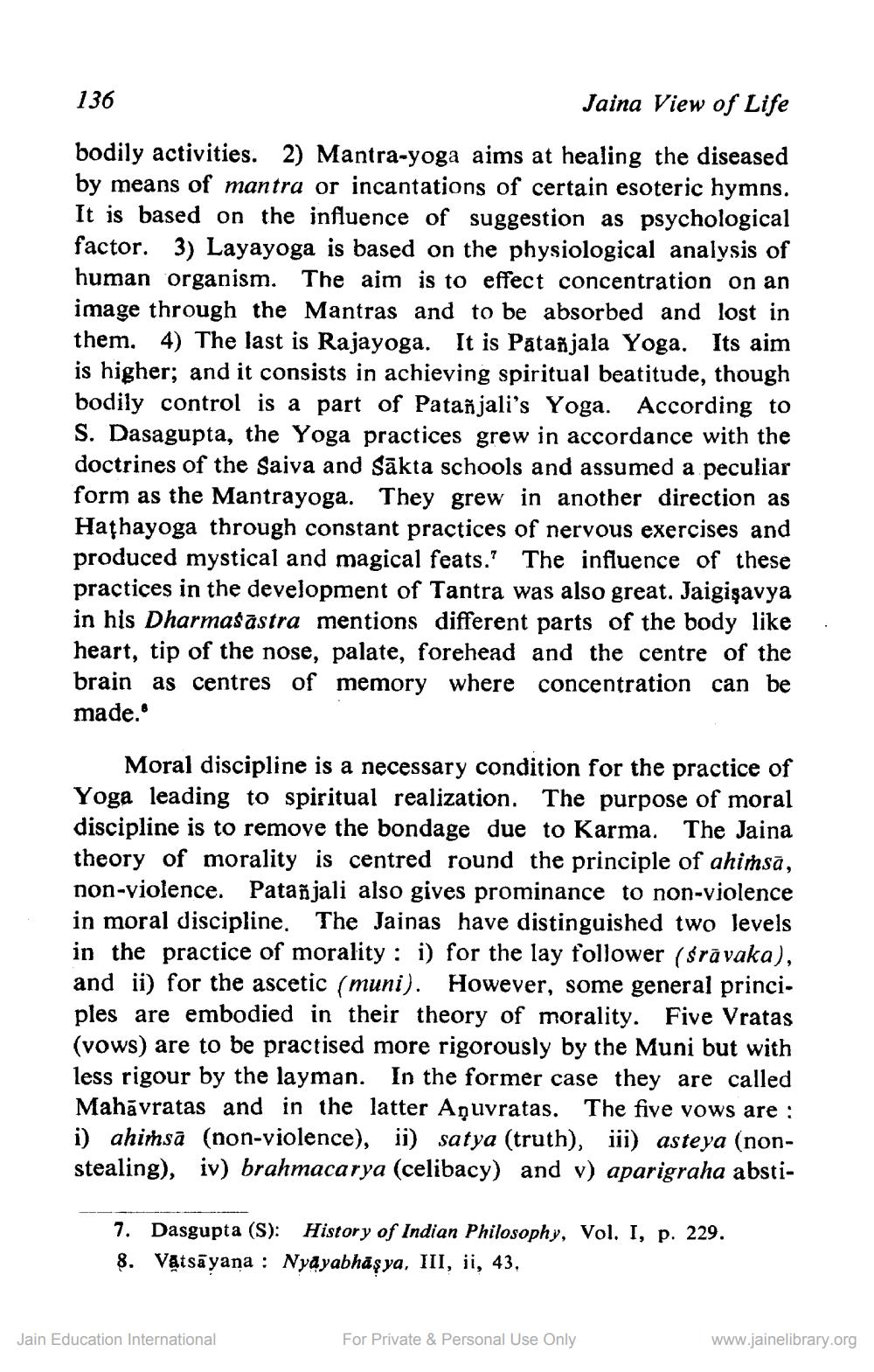________________
136
Jaina View of Life
bodily activities. 2) Mantra-yoga aims at healing the diseased by means of mantra or incantations of certain esoteric hymns. It is based on the influence of suggestion as psychological factor. 3) Layayoga is based on the physiological analysis of human organism. The aim is to effect concentration on an image through the Mantras and to be absorbed and lost in them. 4) The last is Rajayoga. It is Patañjala Yoga. Its aim is higher; and it consists in achieving spiritual beatitude, though bodily control is a part of Patanjali's Yoga. According to S. Dasagupta, the Yoga practices grew in accordance with the doctrines of the Saiva and Sākta schools and assumed a peculiar form as the Mantrayoga. They grew in another direction as Hathayoga through constant practices of nervous exercises and produced mystical and magical feats. The influence of these practices in the development of Tantra was also great. Jaigişavya in his Dharmasastra mentions different parts of the body like heart, tip of the nose, palate, forehead and the centre of the brain as centres of memory where concentration can be made."
Moral discipline is a necessary condition for the practice of Yoga leading to spiritual realization. The purpose of moral discipline is to remove the bondage due to Karma. The Jaina theory of morality is centred round the principle of ahimsā, non-violence. Patanjali also gives prominance to non-violence in moral discipline. The Jainas have distinguished two levels in the practice of morality: i) for the lay follower (śravaka), and ii) for the ascetic (muni). However, some general principles are embodied in their theory of morality. Five Vratas (vows) are to be practised more rigorously by the Muni but with less rigour by the layman. In the former case they are called Mahāvratas and in the latter Aņuvratas. The five vows are: i) ahimsa (non-violence), ii) satya (truth), iii) asteya (nonstealing), iv) brahmacarya (celibacy) and v) aparigraha absti
7. Dasgupta (S): History of Indian Philosophy, Vol. I, p. 229. 8. Vatsayana: Nyayabhāṣya, III, ii, 43,
Jain Education International
For Private & Personal Use Only
www.jainelibrary.org




